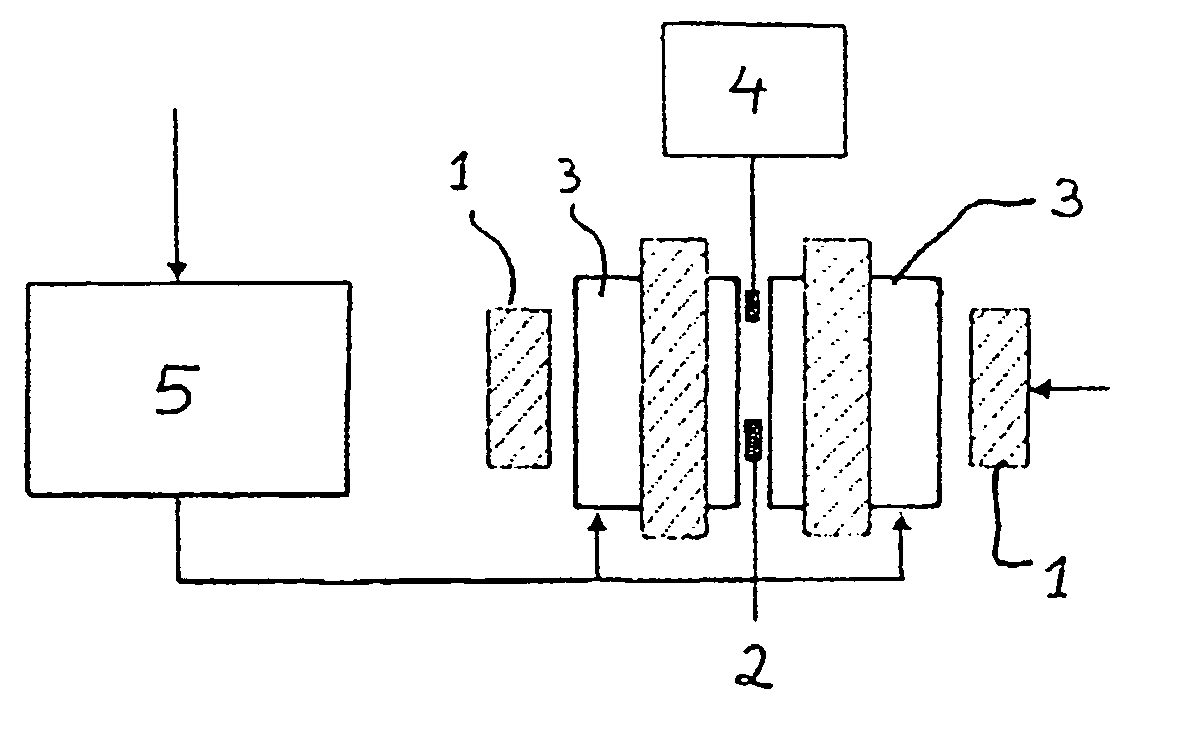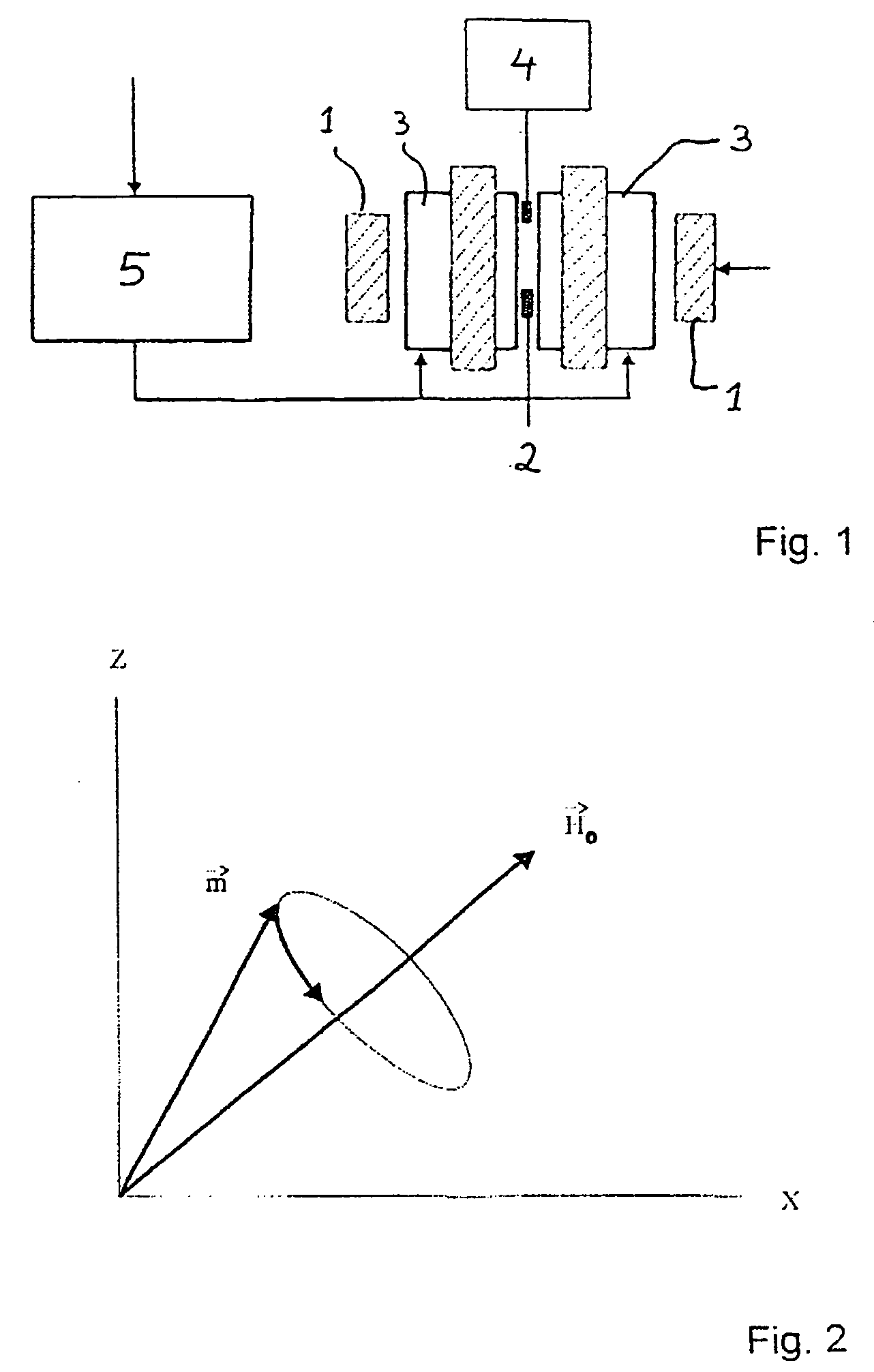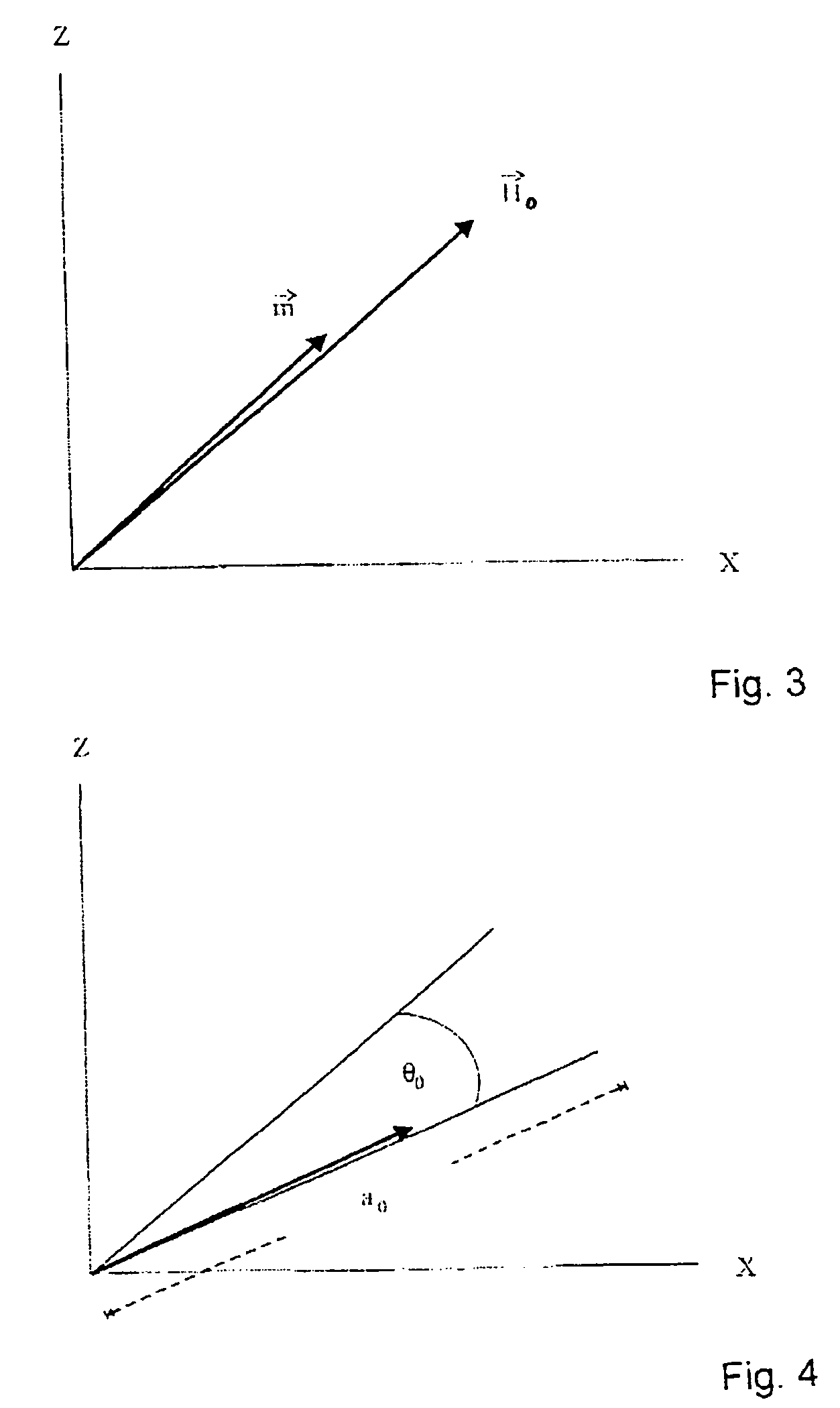Method for calculating frequency and amplitude modulation for adiabatic electro magnetic pulses
a technology of adiabatic electro magnetic pulses and frequency modulation, which is applied in the direction of reradiation, amplifiers, transmission, etc., can solve the problems of reducing the signal-to-noise ratio, difficult to determine pulse shapes, and contradicting the fundamental adiabatic approximation, so as to eliminate the influence of the offset angle i
- Summary
- Abstract
- Description
- Claims
- Application Information
AI Technical Summary
Benefits of technology
Problems solved by technology
Method used
Image
Examples
Embodiment Construction
[0063]In order to understand the method according to the invention, the quantum-mechanical system in which the adiabatic transfer processes are carried out will be explained first of all.
[0064]An electrical circulating current I produces a magnetic dipole field with a magnetic dipole moment μ=I×A, where A is defined as a vector at right angles to the surface covered by the circulating current I. In an homogeneous magnetic field with the magnetic inductance B, the magnetic dipole experiences a torque M=μ×B which is zero when the dipole moment μ is aligned parallel to the magnetic induction B, that is to say when the circulating current I is flowing at right angles to the magnetic induction B. Energy has to be consumed in order to rotate the dipole moment through an angle α with respect to the magnetic induction B. In this case, in accordance with the laws of quantum mechanics, it must be remembered that only discrete energy states (orientations) are possible.
[0065]With regard to orbi...
PUM
 Login to View More
Login to View More Abstract
Description
Claims
Application Information
 Login to View More
Login to View More - R&D
- Intellectual Property
- Life Sciences
- Materials
- Tech Scout
- Unparalleled Data Quality
- Higher Quality Content
- 60% Fewer Hallucinations
Browse by: Latest US Patents, China's latest patents, Technical Efficacy Thesaurus, Application Domain, Technology Topic, Popular Technical Reports.
© 2025 PatSnap. All rights reserved.Legal|Privacy policy|Modern Slavery Act Transparency Statement|Sitemap|About US| Contact US: help@patsnap.com



